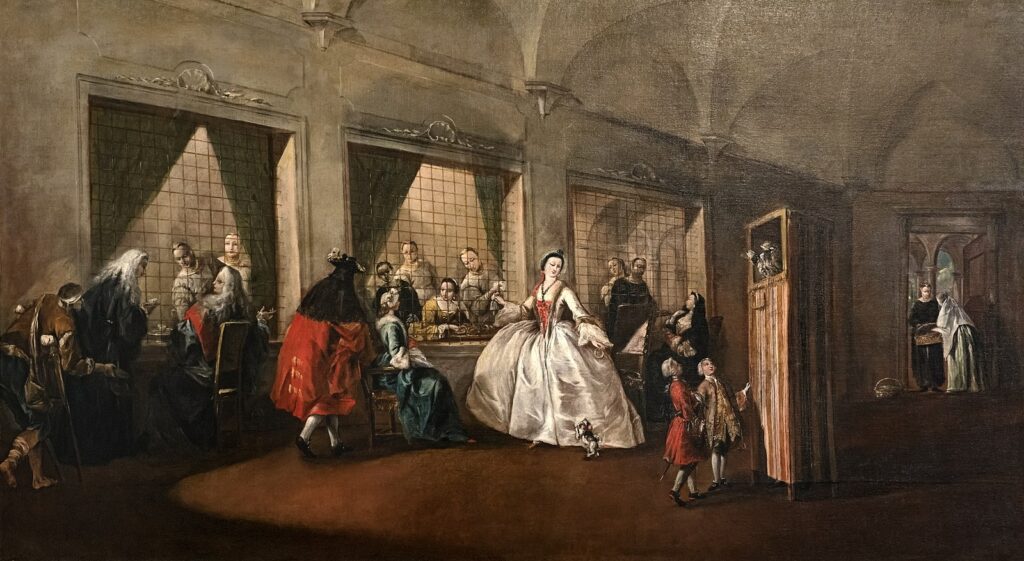The Unseen Artisans: Venetian Nuns and Their Needlework Legacy
Journeying through the rich tapestry of Venetian history unveils a hidden world of skilled artisans—Venetian nuns. Their needlework prowess, particularly in lace-making, was a cornerstone of both monastic life and the broader Venetian society. From the intricate lace patterns that adorned noblewomen’s garments to the delicate embroidery that graced the altars of Venetian churches, the handiwork of these invisible artisans left an indelible mark on the cultural fabric of Venice.
The Origins of Venetian Lace:
Legend has it that the genesis of Venetian lace can be traced back to a romantic tale—a young Venetian woman, gifted a piece of the magnificent “lace of the mermaids” by her beloved, sought to preserve its beauty by recreating its intricate designs with nothing but a needle and thread. Thus, Venetian lace was born. While this tale may be steeped in romance, the reality is that needle lace, known as punto in aria, has been documented in Venice since the late fourteenth century. Unlike the reticello embroidery of the time, which involved embroidering on a linen fabric, needle lace was created entirely without a fabric background, showcasing the sheer artistry and skill of the lacemakers.
The Role of Needlework in Monastic Life:
In a society where idleness in women was deemed morally reprehensible, needlework emerged as a solution, offering both purpose and productivity. Venetian nuns, renowned for their proficiency in lacemaking, sewing, embroidery, and weaving, dedicated themselves to these crafts as a means of self-expression and sustenance. The monastic authorities recognized the economic significance of needlework, as profits from the sale of lace were vital for sustaining the monasteries.
The Legacy of Sister Arcangela Tarabotti:
One notable figure in Venetian lacemaking history is Sister Arcangela Tarabotti, who efficiently managed the lacemaking business at the monastery of Sant’Anna. Through her network of affluent acquaintances, Sister Arcangela secured important commissions, ensuring the timely execution and delivery of exquisite lace pieces. Her correspondence provides insight into the meticulous craftsmanship involved in lacemaking, as well as the challenges faced by the lacemakers in meeting the demands of complex patterns.
The Liberating Power of Needlework:
For many Venetian nuns, needlework offered more than just a means of subsistence—it was a source of empowerment and liberation. Some nuns, like Sister Deodata from the monastery of San Daniele, engaged in private needlework ventures to supplement their income. Similarly, women residing in secular institutions, such as the hospitali, found economic independence through their needlework endeavors. The opportunity to earn money through their industriousness not only provided financial security but also fostered a sense of autonomy and self-worth.
The legacy of Venetian nuns and their needlework extends far beyond the confines of the cloister walls. Their intricate lace creations and meticulous embroidery continue to inspire awe and admiration centuries later, serving as a testament to the enduring legacy of female artisanship and ingenuity in Venice.

The Parlatorio of the Nuns of San Zaccaria, Venice by Francesco Guardi (1712-1793).